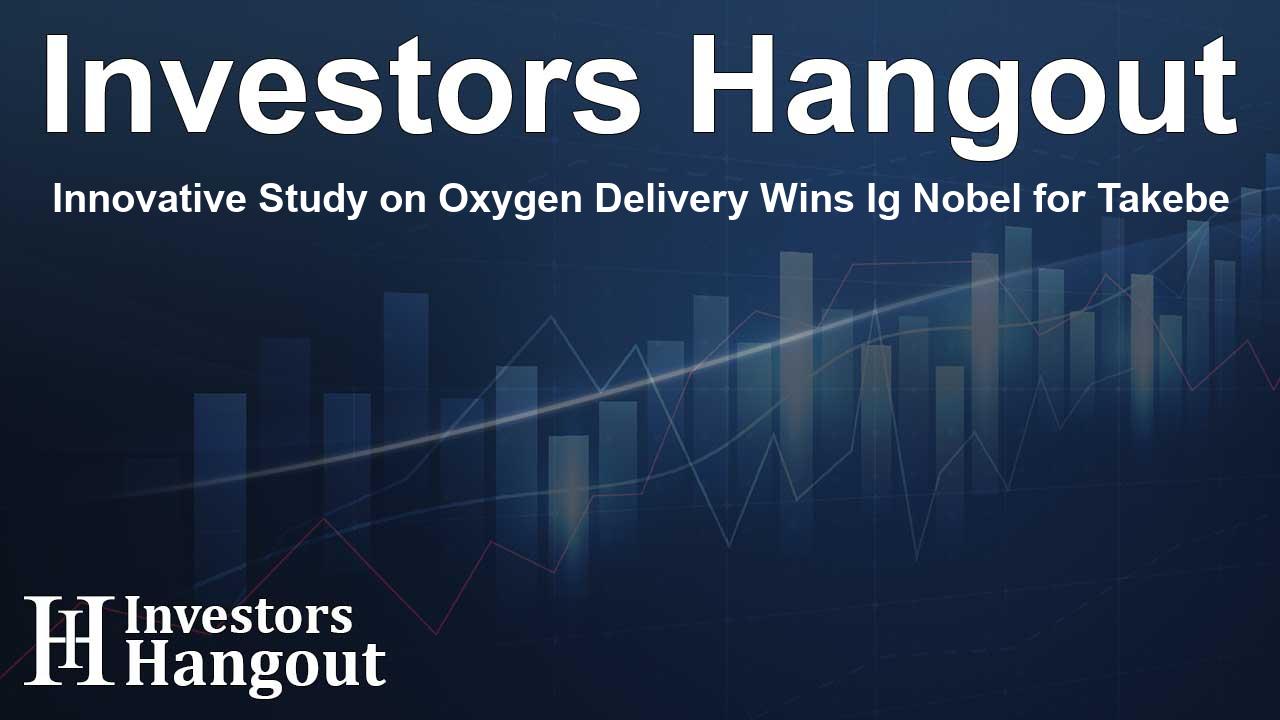Innovative Study on Oxygen Delivery Wins Ig Nobel for Takebe

Takanori Takebe's Innovative Research Recognition
Takanori Takebe recently grabbed headlines for his unconventional approach to a crucial medical challenge, earning him the distinguished Ig Nobel Prize. This award is recognized globally for celebrating quirky yet insightful scientific achievements that inspire laughter followed by reflection. Takebe’s work, rooted in his expertise from Cincinnati Children's and Tokyo Medical and Dental University, focuses on an intriguing method to deliver oxygen through an alternative pathway.
The Research Behind the Award
Takebe's groundbreaking study has been noted for its innovative nature, suggesting that humans might be able to absorb oxygen using their intestines, much like certain aquatic creatures. His research draws inspiration from the loach, a fish capable of breathing through its intestines in low-oxygen environments—an insight that could potentially lead to new medical treatments.
Understanding Enteric Ventilation
This revolutionary concept, known as enteric ventilation, entails delivering a specialized liquid through a rectal tube, which allows oxygen to be directly absorbed into the bloodstream. This approach could serve as a viable alternative for people experiencing respiratory distress, particularly in critical scenarios when traditional oxygen delivery methods fall short.
A Fresh Hope for Patients
Numerous patients, especially those suffering from severe respiratory conditions, have encountered significant obstacles in obtaining sufficient oxygen. Issues such as pneumonia, airway injuries, or the aftermath of the recent global pandemic highlighted the urgent need for inventive treatments. Takebe points out that developing this method could substantially improve survival rates for those who cannot rely on standard respiratory support systems like ventilators.
Notable Progress in Animal Studies
Initial findings revealed that rodents and pigs survived potentially fatal conditions due to this novel method of oxygen intake. These promising trials not only stirred scientific interest but also prompted Takebe to co-found EVA Therapeutics, Inc., aimed at advancing these findings into human clinical trials.
Recent Advances in Human Trials
In a thrilling development, EVA Therapeutics recently announced administering its first treatment to a healthy human volunteer, marking a significant milestone. However, thorough research is still crucial to fully comprehend the practicality and safety of this approach, as the team plans to explore the efficacy of oxygen delivery and any potential side effects.
A Distinct Prize for Distinct Research
The Ig Nobel Prize, presented annually since 1991 by the Annals of Improbable Research, seeks to highlight scientific pursuits that may seem strange but carry profound meaning. Awarded this year at the Massachusetts Institute of Technology by real Nobel laureates, Takebe’s recognition underscores the value of unconventional thinking in advancing medical science.
About Takanori Takebe
Currently, Takebe holds the position of Director for Commercial Innovation at the Center for Stem Cell and Organoid Research and Medicine (CuSTOM) at Cincinnati Children's. His diverse work includes both education and research, solidifying him as a leading authority in organoid medicine. Takebe's vision continues to motivate his colleagues as he delves into the promise of organoid science alongside unique biological insights.
Looking Toward the Future
The outlook is encouraging for Takebe’s innovation, particularly in addressing critical healthcare challenges. As research moves forward and trials advance, there's hope that this method could significantly enhance treatment options for patients with respiratory issues, transforming what may appear as a humorous concept into a groundbreaking medical advancement.
Frequently Asked Questions
What is Takanori Takebe's groundbreaking research about?
His research explores an alternative method for delivering oxygen through the intestines, inspired by the techniques of certain fish.
What is the Ig Nobel Prize?
The Ig Nobel Prize honors unusual and thought-provoking scientific achievements that bring a smile and encourage contemplation.
How does enteric ventilation work?
Enteric ventilation involves using a liquid administered through the rectum, capable of delivering oxygen straight into the bloodstream.
What conditions could benefit from this research?
Conditions like pneumonia and respiratory distress could significantly profit from the alternative oxygen delivery methods suggested by Takebe’s findings.
What recent developments have occurred in Takebe's research?
Takanori Takebe has recently initiated human clinical trials through his company, EVA Therapeutics, successfully administering treatment to a healthy individual.
About The Author
Contact Kelly Martin privately here. Or send an email with ATTN: Kelly Martin as the subject to contact@investorshangout.com.
About Investors Hangout
Investors Hangout is a leading online stock forum for financial discussion and learning, offering a wide range of free tools and resources. It draws in traders of all levels, who exchange market knowledge, investigate trading tactics, and keep an eye on industry developments in real time. Featuring financial articles, stock message boards, quotes, charts, company profiles, and live news updates. Through cooperative learning and a wealth of informational resources, it helps users from novices creating their first portfolios to experts honing their techniques. Join Investors Hangout today: https://investorshangout.com/
The content of this article is based on factual, publicly available information and does not represent legal, financial, or investment advice. Investors Hangout does not offer financial advice, and the author is not a licensed financial advisor. Consult a qualified advisor before making any financial or investment decisions based on this article. This article should not be considered advice to purchase, sell, or hold any securities or other investments. If any of the material provided here is inaccurate, please contact us for corrections.
